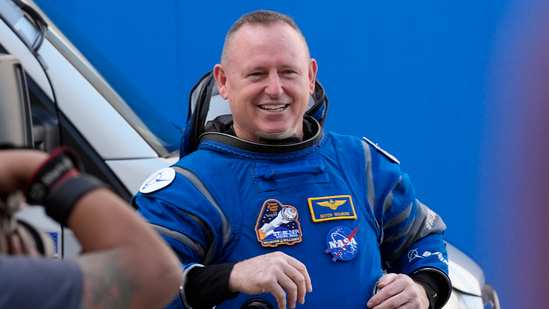Boeing’s Starliner Mission Ends in Controversy After Astronauts Return Home Following Nine-Month Ordeal
What was meant to be a historic, one-week mission aboard Boeing’s first crewed Starliner spacecraft has turned into one of the most alarming spaceflight episodes in recent NASA history. Nearly ten months after Butch Wilmore and Suni Williams were launched to the International Space Station (ISS) on June 5, 2024, the two astronauts have finally returned home—aboard a SpaceX Crew Dragon capsule, not the Boeing vehicle that brought them there.
The failed mission raises critical questions about Boeing’s capabilities in human spaceflight, NASA’s decision-making process, and the safety standards governing future crewed missions.
A Launch Delayed and Doomed by Technical Failures
The Starliner’s launch came only after three separate scrubs and persistent concerns over helium leaks detected in the spacecraft’s propulsion system. Once the capsule reached orbit, issues only escalated. Four of the 28 reaction control thrusters — key for maneuvering and docking — failed as the astronauts attempted to approach the ISS.
According to reporting by Futurism, the situation quickly became dire. Astronaut Butch Wilmore later revealed that the crew and flight controllers were forced to abandon flight protocols and push beyond the mission’s fault-tolerance thresholds:
“I don’t know that we can come back to Earth at that point,” Wilmore admitted. “And matter of fact, I’m thinking we probably can’t.”
Docking Challenges and Risk of Total Failure
The failed thrusters nearly compromised the Starliner’s ability to safely dock with the ISS — an operation that is typically scripted with strict redundancy protocols. NASA reportedly bent its own flight rules to allow multiple docking attempts, a move that raised eyebrows inside the spaceflight community.
Wilmore described the situation as teetering on the edge of disaster:
“We’re single fault tolerant… now we’re zero-fault tolerant, and I’m in manual control. The control is sluggish. Compared to the first day, it is not the same spacecraft.”
Despite the deteriorating condition of the Starliner, Wilmore and Williams managed to complete docking procedures and board the ISS. But what should have been a brief mission spiraled into a nine-month residency as engineers worked to determine whether the spacecraft could safely return to Earth — a determination that ultimately ended in failure.
Stranded in Space, Rescued by SpaceX
After months of uncertainty and no safe path forward using Starliner, NASA quietly arranged for SpaceX to bring the astronauts home. Earlier this month, a Crew Dragon capsule was dispatched to the ISS, successfully returning Wilmore and Williams to Earth.
This conclusion — while safe — marks a significant embarrassment for Boeing and a major blow to NASA’s ambitions for commercial crew diversity. Starliner was meant to serve as a second, reliable alternative to SpaceX’s Crew Dragon under NASA’s Commercial Crew Program. Instead, the mission underscored Boeing’s struggles and raised new safety concerns for future human-rated launches.
Accountability and Questions for the Future
NASA and Boeing now face scrutiny over their decision to continue the mission despite clear mechanical failures. The agency’s willingness to waive safety rules, allow manual docking with limited thruster capacity, and prolong the astronauts’ stay in orbit will likely be the subject of internal reviews, congressional oversight, and public concern.
While the astronauts have returned safely, the long-term implications of this mission may be just beginning. Boeing’s role in the commercial space race has now been severely undercut, and public trust in Starliner as a viable human spaceflight platform has been damaged.
As NASA looks ahead to lunar missions and Mars ambitions, one truth stands out: there is no margin for error in space, and the consequences of compromise can last far longer than any mission timeline.

